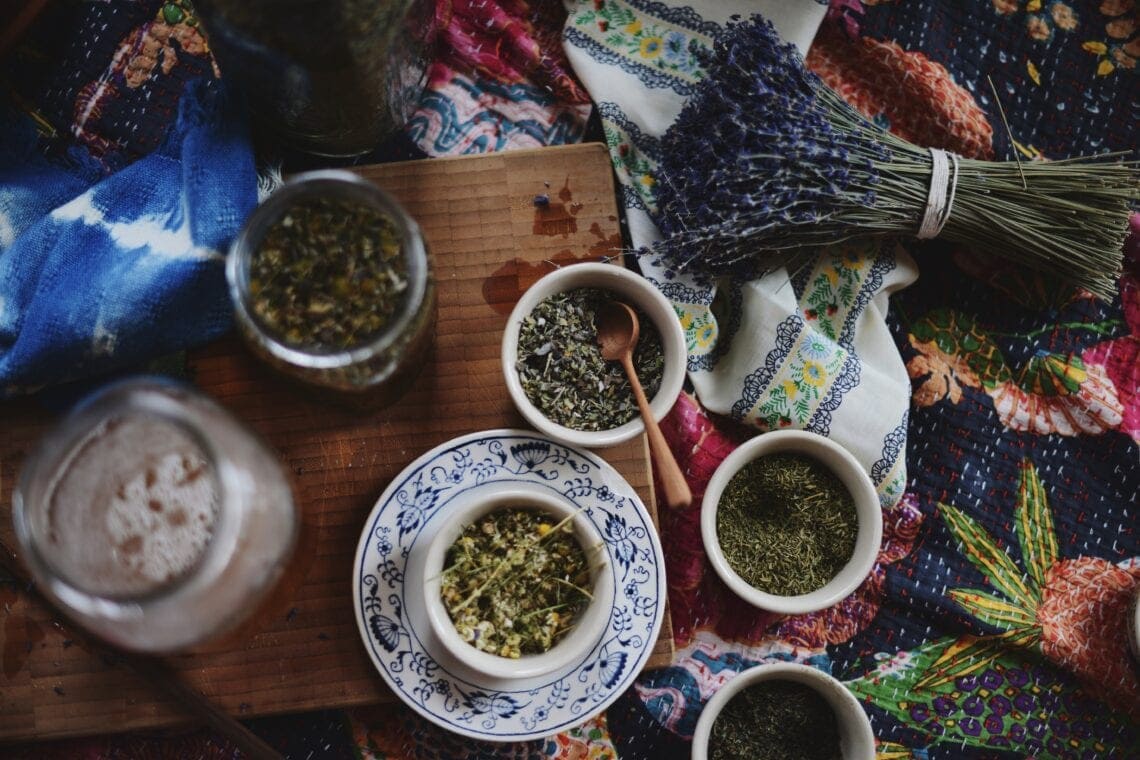UPDATE: I’ve updated the recipe to exclude honey as it was brought to my attention that feeding honey to bees is not recommended. The original recipe included honey and comes from Gunther Hauk author of Toward Saving the Honeybee and co-founder of Spikenard Farm Honeybee Sanctuary. He has 4 decades of experience working with and saving honeybees and has tested his bee tea recipe for over 20 years.
We have bees again! After losing our hive last year, we are so happy to have another in the yard again. I’m not exactly sure why we lost the last hive, but I plan on being a more vigilant beekeeper this time around. The new ladies (worker bees are all female!!!) arrived on a dreary wet and cold Monday, so we kept them inside overnight still in their nuc box and installed them yesterday. It was still quite cold and windy but at least they were dry.
I’m no expert at beekeeping but am learning as I go and will share my backyard beekeeping adventures with you here from time to time. Bees are amazing little creatures and are so vital to our food systems. The decline of the honeybee populations around the world is a very scary thing. Planting flowers for honeybees and other pollinators is one of the best ways to help save the bees. We are patiently waiting for the spring to warm up so we can sow our new garden with many flowers and herbs that the bees will love.
Years ago I heard of herbal bee tea through the Mountain Rose Herbs blog. The original healing tea for honeybees recipe came from Spikenard Farm Honeybee Sanctuary. I adapted their recipe to make a herbal feed syrup for our bees because they have little to forage from outside right now, and they need to stay in the hive for a while to get it established.


Herbal Bee Feed
Ingredients
- 4 cups organic white sugar
- 4 cups well or spring water
- 1/2 teaspoon dried chamomile blossoms
- 1/2 teaspoon dried nettle
- 1/2 teaspoon dried peppermint
- 1/2 teaspoon dried sage
- 1/2 teaspoon dried thyme
- 1/2 teaspoon dried lemon balm
- pinch of good quality high mineral salt such as Himalayan pink salt
Instructions
- Prepare an infusion of the dried herbs in 2 cups of boiling water. Let herbs steep in water in a covered vessel for 10 minutes.
- In a 1/2 gallon mason jar, dissolve sugar and salt in 2 cups of warm water - not boiling.
- Strain herbal tea through a strainer or cloth and add tea to the sugar water.
- Stir everything together and let cool to room temp before feeding to bees.
Notes



Sunny
I’d love to know more about why making the tea is beneficial for the bees please.
Kaity Farrell
Hi Sunny! Well, from what I’ve read, there’s not any scientific studies out there to prove if it actually is beneficial. The thought is that the herbs will boost a colony’s metabolic and immune systems. The recipe from Spikenard Farm was inspired by the healing herbs used in biodynamic compost preparations, for their role in ameliorating and furthering basic metabolic processes in the compost. (I’m paraphrasing from Spikenard’s site) I did read that the spearmint and lemongrass essential oils have been shown to be enhance bees’ health in laboratory experiments. Thanks for your question! xx Kaity
Amy
How do you feed this to your bees? Leave it in a shallow dish next to the hive?
Kaity Farrell
Hi Amy! I use two quart sized mason jars with tiny holes punched in the lids. When installing a new package of bees you place the jars inverted inside the hive. You can find youtube videos showing this. There are feeder trays you can use to sit the jars into, which can then sit inside the hive or at the entryway. I’ve heard of people making a tea, 1 cup honey to 3 cups tea, and place that in a shallow dish outside the hive-like a bird feeder but for bees! Hope that helps! xx Kaity
laurie
It’s not a good idea to feed bees honey collected from any hives other than ones you know personally have healthy bees.
There are bee diseases that can be transmitted to the new package feeding them honey from a sick hive. Local honey is safer than store bought in that “local” honey has likely come from fewer hives, but even local bees might have Foulbrood or Nosema. Their honey is perfectly safe for humans to consume, but you don’t want to infect your bees.
Kaity Farrell
Thanks for your tip, Laurie. What do you suggest instead of honey? xx Kaity
Chris
As a bee keeper we never feed honey to our 🐝, nothing worse than spreading bad information
Kaity Farrell
Thanks for the information, Chris. Like I said in the post, the original recipe comes from a reputable bee sanctuary, so as a newbie home beekeeper I had not questioned it. Nevertheless, I’ve updated the post to exclude honey. May I ask how you came across this post? I am curious because it is 5 years old and another person recently commented something similar about not giving bees honey. We haven’t had bees for a few years now, but if we ever get more hives I will be sure not to give them honey. I appreciate you taking the time to comment and educate!
Rob
Thanks for sharing this. I will look into Spikenard Farm’s resources for honeybee care.
Kaity Farrell
test